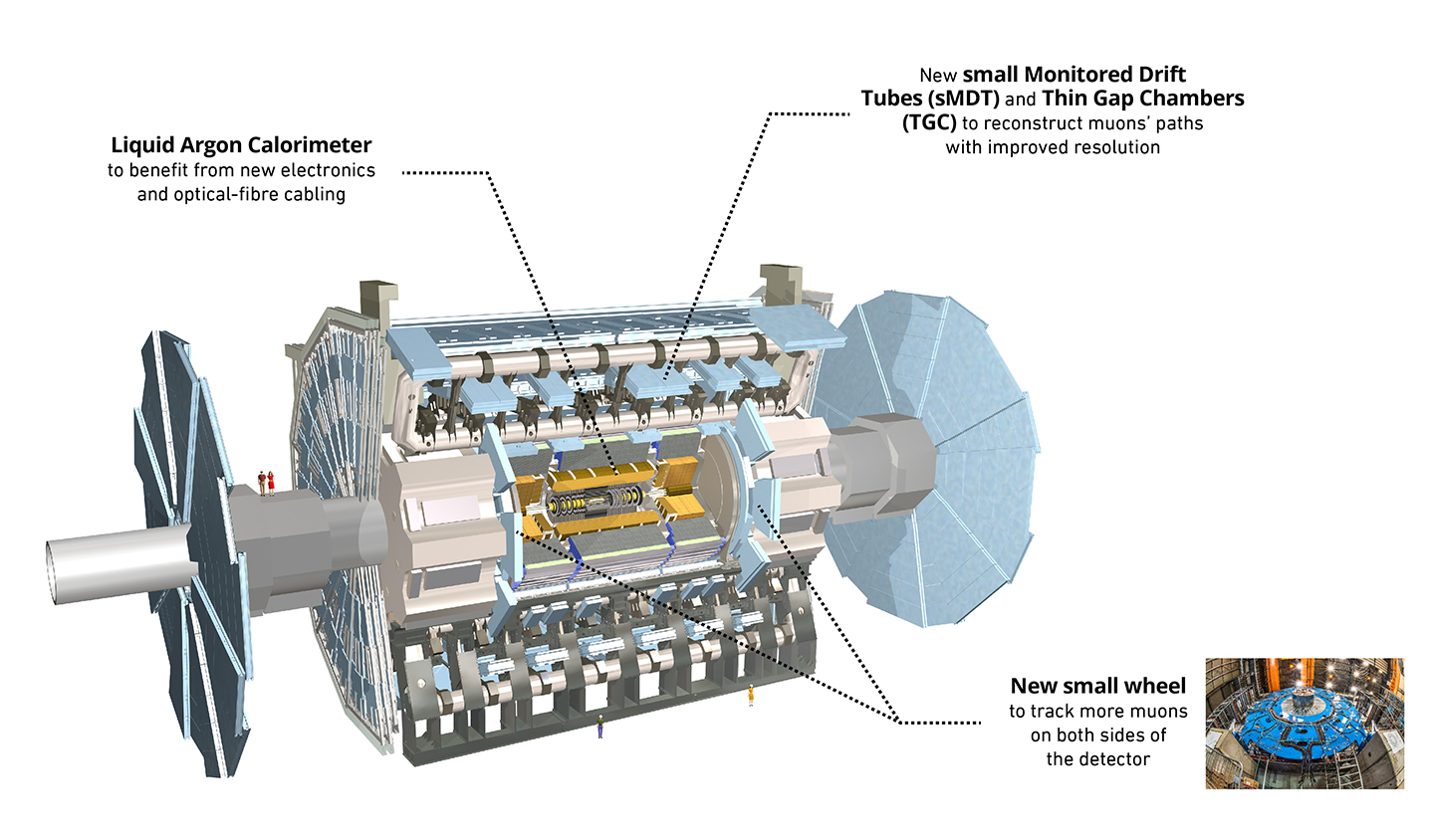
How is the ATLAS detector preparing for the future? When the CERN accelerator complex switched off in December 2018, ATLAS scientists and technicians promptly got to work opening the shaft leading from ground level to the underground ATLAS cavern, as well as opening up the detector itself. They will be maintaining and upgrading the detector over the next two years, the time CERN has allocated for a technical break called Long Shutdown 2 (LS2). Some of the improvements are part of the upgrade of the Large Hadron Collider (LHC), the High-Luminosity LHC (HL-LHC), set to run from 2026. The upgrade will greatly increase the rate of particle collisions, bring higher readout rates and create more opportunities for physics discoveries.

ATLAS is the largest LHC experiment. Installed between 2003 and 2008, it aims, like CMS, to understand the properties of the Higgs boson and search for new physics.
New not-so-small wheels
A major improvement to the experiment will be the installation of two new wheel-shaped detectors to track particles called muons. Muons can be thought of as heavier cousins of electrons and pass through the inner parts of the detector with little disturbance. If you imagine the detector as an onion, the muon spectrometer is the outer skin. Muons that speed away at angles smaller than 40 degrees from the beam direction are measured by a series of three layers of subdetectors, the innermost of which is known as the small wheel – because it is “only” 9.3 metres in diameter.

The new wheels will improve ATLAS’s triggering capabilities and will be able to cope with the higher muon rates expected from the HL-LHC. Each wheel consists of 16 wedges, or sectors, covered with layers of detector chambers known as micromegas (MM) and small-strip thin-gap chambers (sTGC). Both MMs and sTGCs have excellent precision tracking capabilities, at the level of 100 micrometres, and the very good response time needed to uniquely identify the collision time.
Assembly is currently taking place on the surface and the wheels will then be transported to ATLAS and lowered through the shaft to the detector. One of the existing small wheels was brought to the surface last week and the first new wheel is scheduled to enter the ATLAS cavern in spring 2020.
Remodelling ATLAS inside and out
Linked to the upgrades of the muon detection system is the addition of 16 new stations to improve ATLAS’s capability to detect muons in the region between the barrel and the endcaps. The stations contain gas-filled small monitored drift tubes (sMDT) and resistive plate chambers (RPCs). Physicists can track muons using the trail of electrically charged particles caused by the muons passing through the gas. The reconstruction of the muons’ paths will be improved thanks to sMDTs with a smaller diameter and new-generation RPCs with reduced electrode thickness.
Another major task happening during LS2 is the replacement of some components of the Liquid Argon Calorimeter’s (LAr) front-end electronics. This will improve ATLAS’s ability to preserve important signals coming from electrons and photons. On top of that, the upgrade of the trigger and data-acquisition systems will prepare the experiment for the HL-LHC.
In parallel to work on the detector, construction work is also continuing apace around ATLAS on the surface and underground, in preparation for the HL-LHC. A 62-metre-deep shaft has just been completed and civil engineers are now busy digging a service cavern and galleries for new equipment.
While many of ATLAS’s upgrades and installations will take place during Long Shutdown 3 (LS3), which is scheduled to begin in 2024, the activities taking place over the next two years will make it a better performing detector, ready to take data when the LHC restarts in 2021.
Read more in “ATLAS upgrades in LS2” in the latest CERN Courier, ATLAS’s news summary, and LS2 highlights from ALICE, CMS and LHCb.
More photos from ATLAS are available on CDS: